We Embedded With Vigilante Drug Testers at the Gathering of the Juggalos
It was the late afternoon on the last day of the Gathering of the Juggalos, and we were looking for a cocaine dealer.
A half hour earlier, a festival attendee approached Bunk Police’s booth, a fentanyl test strip showing a positive result in hand. “Where did this come from?” Adam Auctor asked. “It’s from cocaine,” the juggalo said.
Auctor, the founder of the vigilante drug-testing company Bunk Police, looked at the test strip and quickly threw on his backpack, making the decision to go back to the guy’s camp with him. Armed with drug-testing kits and Narcan, Auctor walked through the Gathering, past vendors, dodging golf carts full of juggalos, finally landing at a campsite where a handful of friends were hanging out on a tarp. He proceeded to test the purported cocaine with multiple methods, ultimately deciding the positive fentanyl test was accurate.
“Where’s the dealer? Let’s go talk to him,” Auctor told the apparent leader of the friend group.
It was the sixth cocaine sample from separate dealers this festival season that Bunk Police has seen a fentanyl test come back positive from. Before this year, though, Bunk Police had never seen a positive fentanyl test arise from a coke sample.
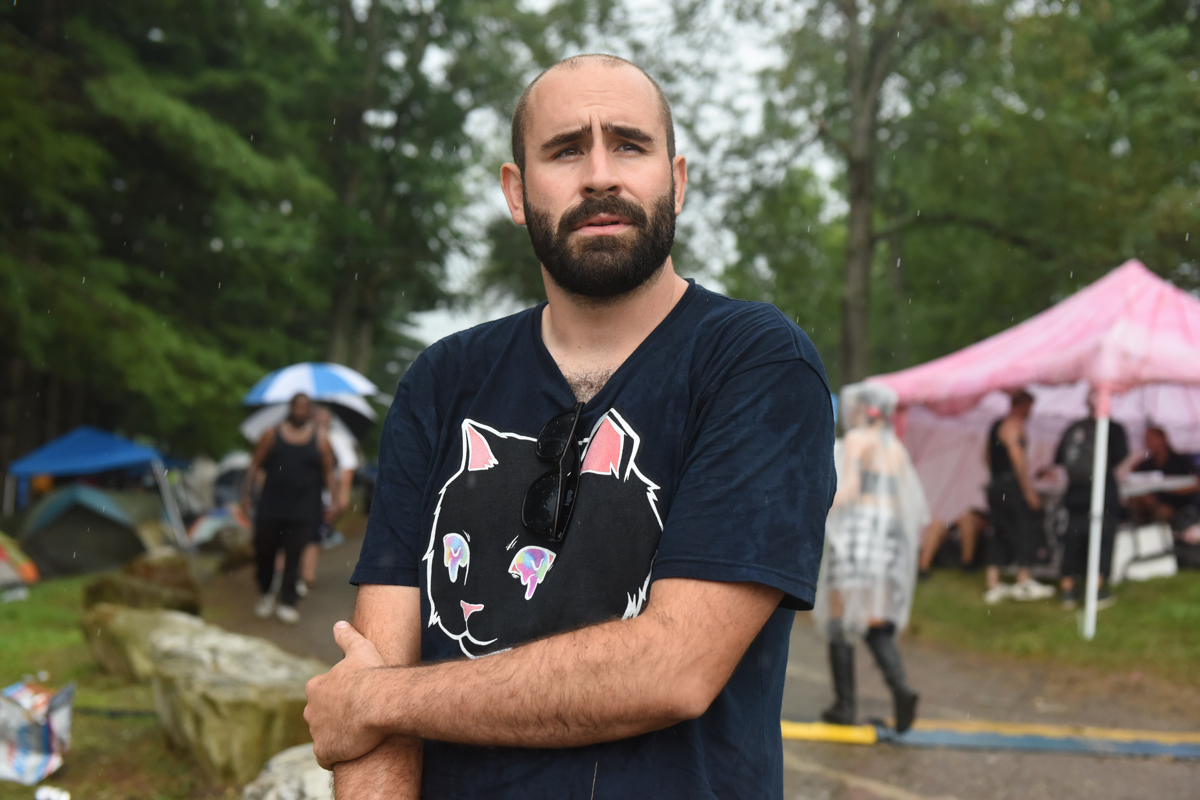
Bunk Police, founded in 2011, is one of the largest drug-testing kit suppliers in the world. Auctor, 32, an Eagle Scout and the company’s founder, has dedicated his life for the last seven years to creating a sea change in the drug market, especially in the festival scene.
“I do this because I feel like if I don’t, no one else will.”
“I want to force a change in the festival community where they can really no longer just disallow harm reduction,” Auctor told me. “I’m not even close to where I want to be… The change is going to happen if it kills me.”
The Bunk Police’s efforts have largely been focused on electronic dance music (EDM) fests up until now, where they sell a variety of drug-checking kits so people can discern what they they’re snorting, popping, or ingesting in any other manner.
“I do this because I feel like if I don’t, no one else will,” Auctor explained.
It had been a relatively calm few days up until the fentanyl-laced coke was found at Gathering of the Juggalos, the annual festival that brings together thousands of Insane Clown Posse fans. This year, the four-day event was held in Ohio, one of the states with the highest drug overdose death rates in the country. That’s a motivating factor in why Auctor, who lives in Nebraska, traveled hours to the notorious event. “I’ve been threatening to do it for years,” Auctor said. “I finally made the decision because of the fentanyl epidemic in Ohio.”
Bunk Police will show up at events with or without permission from organizers. That means they can (and sometimes do) get kicked out—as was the case this year at Bonnaroo, according to Auctor—and could even face charges and prison time since drug-checking kits can be considered paraphernalia. Security at a festival once even seized thousands of dollars’ worth of the company’s testing kits, later turning these into police.
The Illicit Drug Anti-Proliferation Act (also known as The RAVE Act) has been US law since 2003. It’s a hurdle to Auctor and others in harm reduction being able to conduct their work effectively and in peace. The law means event organizers can be held responsible for drug-related activity on site—it can be used to disallow harm reduction, misconstruing it as being involved with substance use. In reality, services like drug checking can be a life-saving intervention that acknowledges the truth: People will take drugs at events regardless. Still, even outside the US, as is the case in Canada, organizers can site murky legality surrounding drug-checking services, not to mention their permits and insurance being potentially affected.
“Event promoters use the RAVE Act as an excuse to disallow harm reduction efforts, when in actuality their concerns are more likely centered around a fear of increased insurance premiums,” Auctor said.
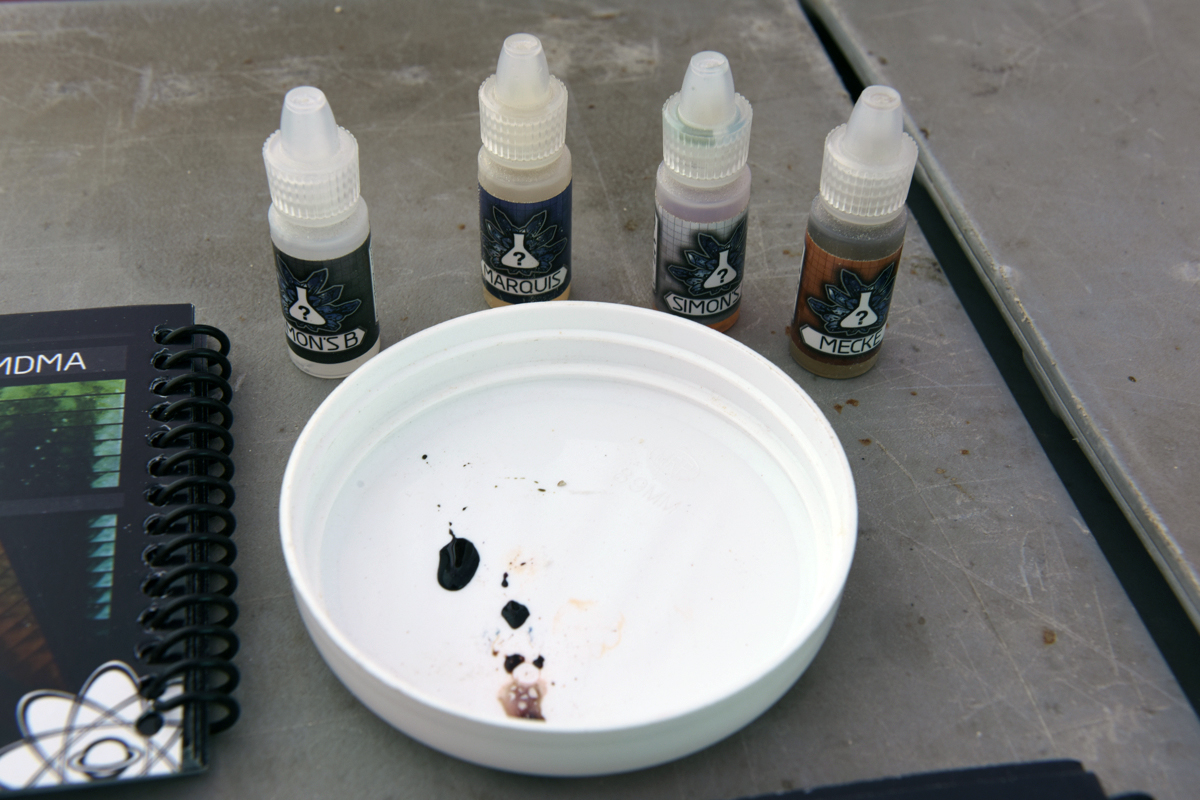
Live Testing
Bunk Police doesn’t usually do live testing of drugs—it’s a process they’ve phased out for a variety of reasons. Rather, Auctor tries to help people figure out testing for themselves, removing himself from the equation to minimize liability. “People were doing drugs in front of me: At one point a guy did a big bump of ketamine and fell over on top of the testing platform while I wasn’t watching,” Auctor told me about an incident at another event. Besides, people can get pissed off when their baggie doesn’t contain what they think it does. That’s something I witnessed at the Gathering, where Auctor broke tradition by offering live testing.
On the Thursday afternoon of the Gathering, Auctor tested a sample of blotter paper that a juggalo presented as acid. When a test came back indicating it was likely a hallucinogen called 25I-NBOMe, which can be fatal in certain doses, the person who had their substance tested went back to the dealer. The dealer, a large guy at least six-feet tall, came up to Bunk Police’s booth, hunched over it, and became argumentative with Auctor, who was sitting behind a table. A woman holding an infant accompanied the dealer. He was visibly angry, claiming the test must be wrong. Auctor was concerned the situation would turn violent, but the woman with the dealer de-escalated the situation, and the group left the booth after a tense ten minutes. Moments after, Auctor breathed a sigh of relief, telling me, “This is why I don’t usually do this.”
People questioning the validity of Bunk Police’s testing kits is an ongoing issue. A 2017 VICE UK article “Are Home Drug Testing Kits Actually Helpful?” has repetitively been weaponized against Auctor’s efforts, particularly by event organizers.
Though Auctor said the type of testing kits they distribute at events are “not 100 percent infallible,” Bunk Police’s aim is not to prove a substance is pure, or qualify it. Rather, they’re looking to prove a substance is impure, or disqualify it.
“Our products are able to disqualify a significant percentage of samples—in some cases surpassing 50 percent—which results in users making the choice not to consume these impure and possibly dangerous substances,” Auctor explained. “When these methods are not available, users are left with only one option: to take the dealer’s word as absolute truth.”
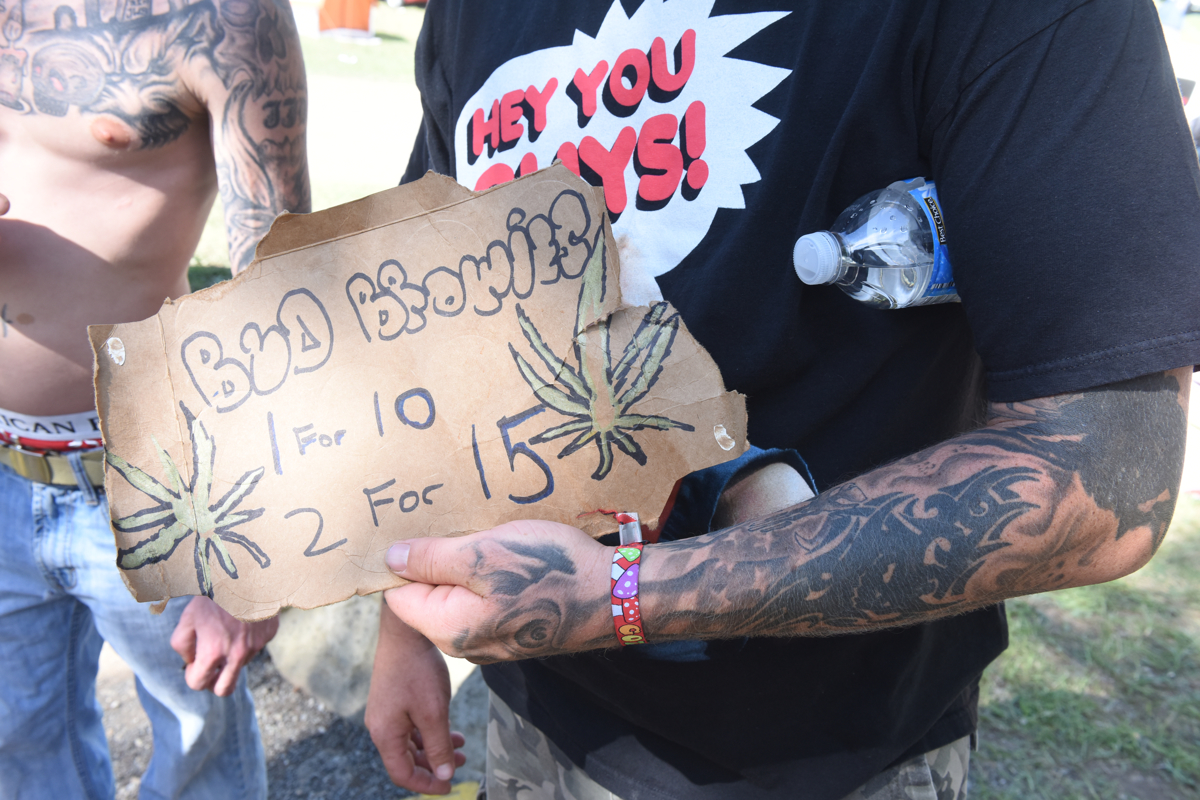
A Tight-Knit Community, an Anomaly
Gathering of the Juggalos felt closer to a jamband festival than an EDM one. Between Faygo showers, constant “whoop whoop”-ing, and its undeniably unique community members, though, it’s an incomparable event.
There’s another feature that separates the Gathering: Unlike the many music festivals that have become more and more corporate as time goes on, this one has maintained a level of authenticity. It’s more indicative of an anything-goes attitude, with naked people walking around freely and the selling of drugs via handmade signs and megaphones.
Bunk Police didn’t once have an issue with security personnel at the Gathering, an anomaly in their work. The tactics they’ve used in the past at other events to get testing kits on site—wading through a swamp in the middle of the night, throwing duffel bags over fences, convincing food vendors to bring their kits in—were not necessary here. At the Gathering, when they approached the entrance gate with their wagon full of testing kits, there was a distracting incident going on at the same time involving a vehicle and police. Bunk Police walked right in.
The vast majority of drugs Bunk Police tested at the Gathering were psychedelics, and most of the drugs were what people thought they were. MDMA (shockingly) was usually MDMA, LSD usually was LSD, and DMT was DMT. With the exception of some fake acid going around, by the last day of the festival, it seemed that juggalos’ drugs had a heightened level of integrity.
“We’ve never had such good results at any event,” Auctor told me just before the fentanyl-laced coke incident.
An hour later, Auctor accompanied a juggalo as as he confronted a dealer in a camping area. The group of friends who had gotten the fentanyl-laced coke were already on high alert about opioid-spiked drugs and had picked up a FentKit from Bunk Police earlier to test their stuff. “I don’t want to risk it—one of our friends just died,” a woman in the group said.
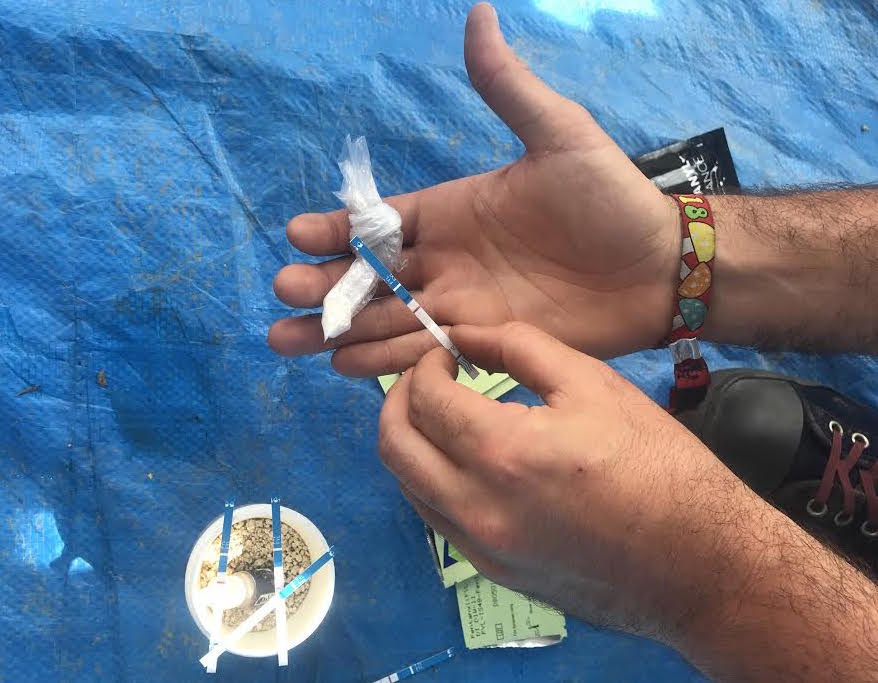
Interview with a Fentanyl-Laced Coke Dealer
We walked into a camp in a wooded area where the dealer was standing beside a tent. Auctor asked the dealer if he could test a sample directly from his supply. It came up positive for fentanyl. A tense conversation ensued, which Auctor helped mediate, ending with the dealer agreeing to give a refund to the customer in exchange for drugs being returned.
“I was unaware of this, I’m really not happy about it to tell you the truth,” the dealer told me following the incident. “That’s not me… I’m not that guy, I give a shit about people.”
The dealer, who was from Ohio, said he had picked up the product the day before in a nearby city and had only done a few transactions with it since. He also said that he and his friends had been using it that none of them had experienced overdose. This is completely possible when considering what is referred to as the “chocolate chip cookie” effect.
“I don’t want to fucking hurt anybody. I don’t want that on my conscience.”
Fentanyl and fentanyl analogues are extremely potent opioids. What that means is that even small amounts can cause an overdose. It’s many times more potent than heroin, easier to traffic, and massively profitable. Those without a tolerance to opioids—say, someone who only uses cocaine—are especially vulnerable to overdose when they ingest fentanyl. When fentanyl is found in another substance, such as cocaine, it is not necessarily evenly distributed. Just as is the case with making chocolate chip cookies, not every cookie has the same amount of chocolate in it; some will be loaded, and some will have only a couple of chips.
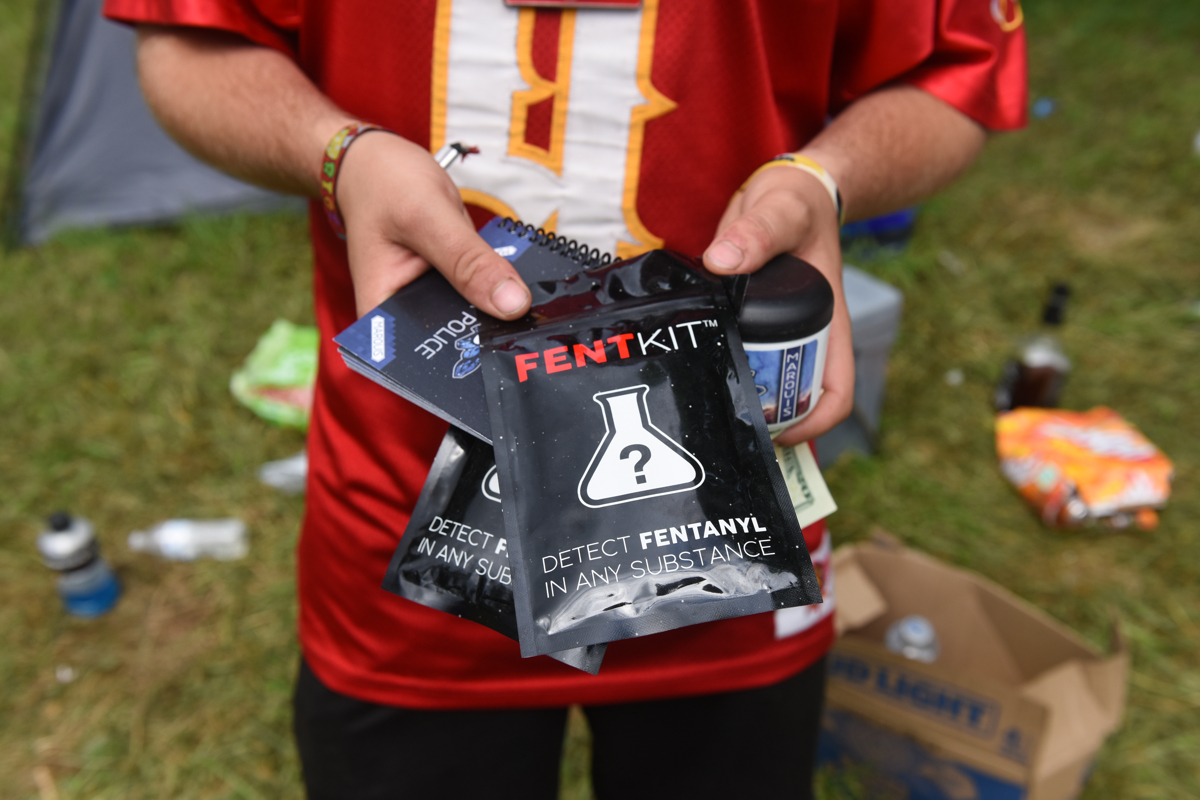
What Auctor determined through multiple fentanyl test strips was that the juggalo dealer’s product had fentanyl mixed unevenly throughout it. That means that some samples returned a negative test for fentanyl, whereas multiple other samples from the same source returned positive ones.
“I don’t want to fucking hurt anybody. I don’t want that on my conscience,” the dealer told me. He said he had lost multiple friends to overdose and that he’d even struggled with opioid addiction in the past.
“What are you going to do now?” I asked him.
“This is all going to go back in this pretty little bag here,” he said, visibly shaken, motioning to the returned fentanyl-laced cocaine, then to his tent, “and I’m going to go back to my dealer, and I’m going to break his neck.”
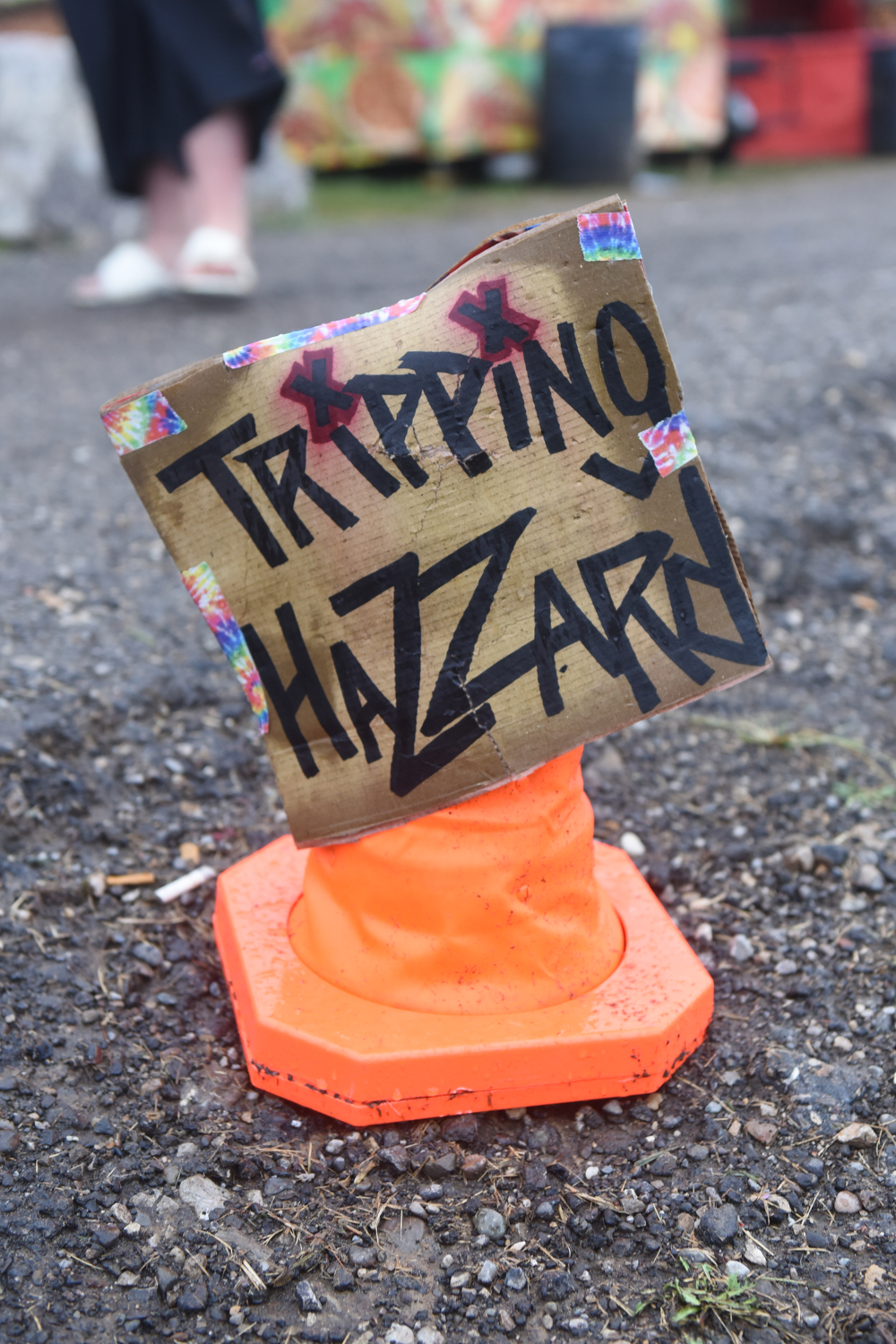
When I inquired about whether or not his source sold opioids, which could have potentially led to cross-contamination (say, via a shared scale or surface), he told me that was not the case. “However, his guy might have done it that way, because it is a chain—everything comes down the chain,” he said.
The dealer told me it was “time to shut it down” in regards to selling the laced product he had. But since I didn’t see him again at the festival, I can’t be sure what happened after we returned to Bunk Police’s booth.
The Mythology of Dealers
By now, you might be thinking this dealer was someone from outside of the community who was simply at the Gathering to profit. But, he told us he’d been a juggalo for many years.
There’s a myth that dealers with tainted drugs at festivals are people from outside the community, according to Auctor. During the EDM festival Electric Forest in Michigan in June, Auctor and his team recorded a video of a dealer crying about the discovery that his cocaine had fentanyl in it: “This is somebody who dresses like them, talks like them, goes to the exact same events, and participates in the same way they do,” Auctor told me.
On the second day of the Gathering, a couple came up to Bunk Police’s booth, curious about their wares. When they told Auctor that they weren’t worried about the authenticity of their drugs because they knew their source, he played them the video on his cell phone. After, one of them motioned to the fentanyl-testing kits displayed on the table and said, “I’m definitely going to take one.”
Auctor gave it to him for free. Though Bunk Police usually sells their FentKits, which contain five testing strips, for $10 and their other standard kits for $30 each, Auctor said the Gathering required a different approach. Concerned that attendees who couldn’t afford kits would use drugs without testing, Auctor gave away hundreds of kits to those who wanted one but showed hesitation when price was brought up. It was a decision that cost the company thousands of dollars. “We have to sell kits, we can’t support ourselves if we don’t,” Auctor, who said he chooses to put the majority of Bunk Police’s profits back into research, later told me.
“These are people too—everybody deserves to be able to make a safe choice if they can.”
The results Bunk Police yielded at the Gathering were different from what Auctor is used to seeing at EDM festivals. There, Auctor said he more often sees purported MDMA coming up as cathinones (also known as “bath salts”) and meth.
“[Juggalos] watch out for each other,” Auctor said. “It’s a much tighter-knit community. There are fewer people here, and they’ve been coming out to this event for 10, 15 years, so it’s kind of like a family.”
The Gathering was Bunk Police’s first foray outside of the communities it normally works within. Auctor is currently trying to figure out how to bring drug-checking kits into the hip-hop scene, as well as looking to expand Bunk Police’s reach to other demographics and people of varying socioeconomic backgrounds.
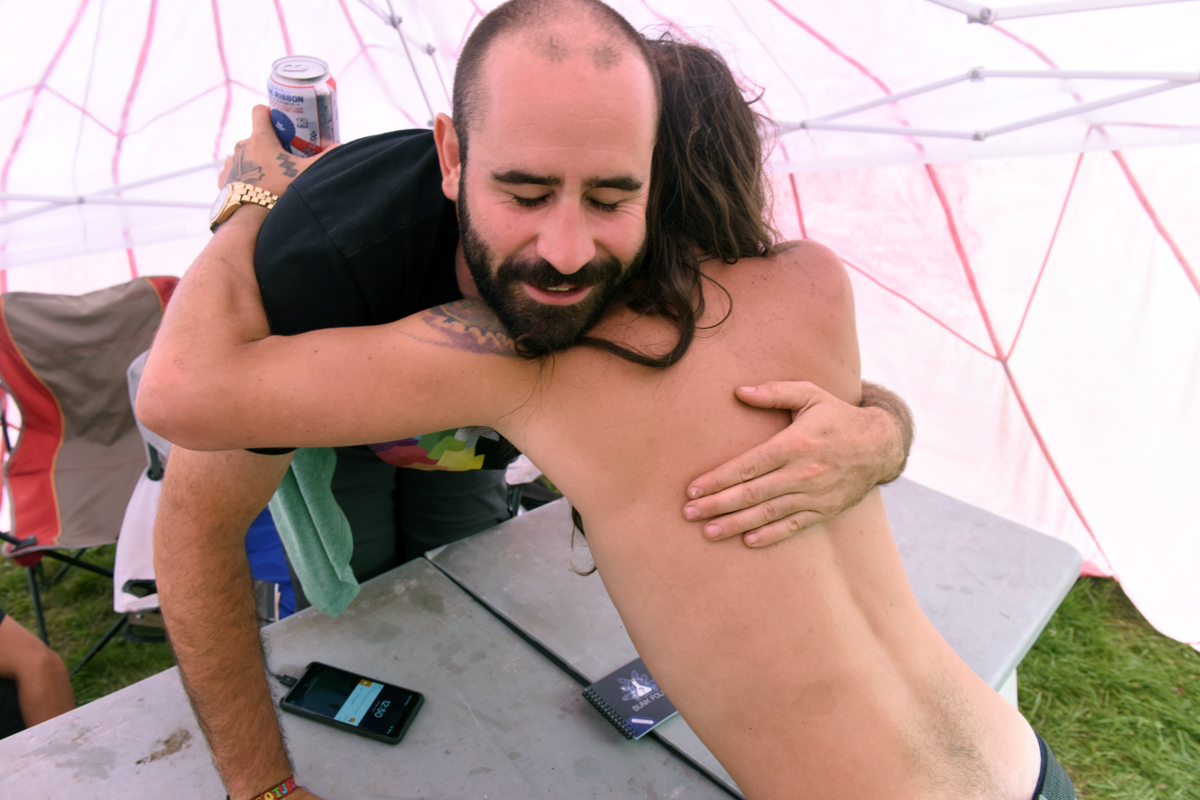
“These are people too—everybody deserves to be able to make a safe choice if they can,” Auctor told me of his decision to come to the Gathering.
Hours after the fentanyl-laced coke incident, it was time for Bunk Police to break down their disarmingly pink tent and pack up their van. Auctor was headed back to Nebraska for a rare summer week off festivals. He said he never goes to festivals for fun anymore. “I can’t let my job go if I’m in this environment. I don’t even go out to the music very often because I’m not enjoying the music… I’m looking for that person down on the ground.”
However, he said he’ll usually start to relax on the last day of a festival, once most of Bunk Police’s work is done. Then, it’s time to stress about the next one, which is sometimes a 20-hour drive and just two days away.
Throughout the Gathering, people regularly came up to Bunk Police’s booth to thank them for their work, or simply shouted, “You’re awesome!” as they walked by. Auctor even fielded hugs from juggalos. “I’ve kind of run out of ways to say you’re welcome, and that’s the biggest part that makes me uncomfortable,” Auctor said. “I appreciate that they go out of their way to thank me. It definitely keeps me going.”
“People tell me that I save lives all the time. For some reason, I can’t just be like ‘Yeah, I save lives,’” Auctor said. “But maybe this year I’m really starting to feel like it because of the fentanyl.”